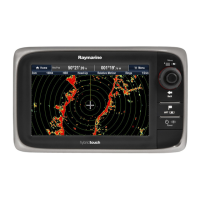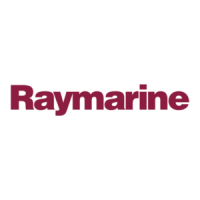Why is instrument, engine or other system data unavailable at all Raymarine Monitor displays?
- MMark NorrisSep 23, 2025
If instrument, engine, or other system data is unavailable at all Raymarine Monitor displays, check the data bus (e.g., SeaTalkng) wiring and connections, as well as the overall integrity of the data bus wiring. Verify that the source of the missing data (e.g., ST70 instrument or engine interface) is operating correctly, and check the power to the SeaTalk bus.



